Well, there are Shankarpali and then there are Shailaja Bamane’s Shankarpali. That’s all I can say. I have been relishing these wonderful treats for a couple of years now and the pandemic has caused me to double down and make them at home.
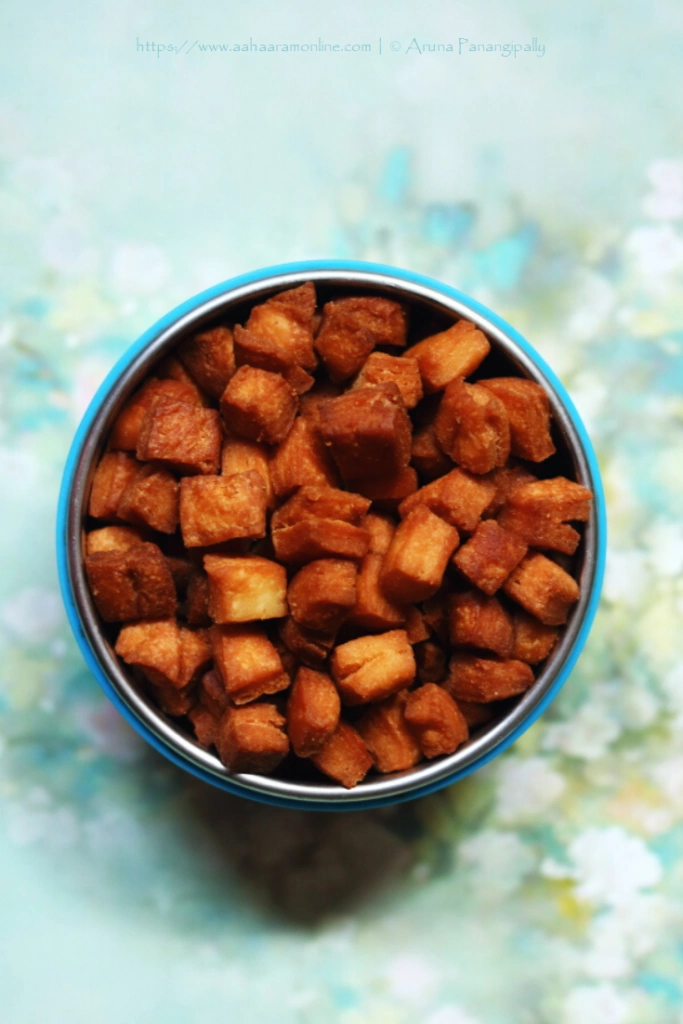
Trust me when I say that when you make Shakkar Para (as they are called in North India) Ms. Bamane’s way, you will not go back to making them any other way. The best part is that her recipe is idiot-proof and super simple to replicate. What I love about this version of Shankarpali is that they are layered, light, and crisp; and remain so for many days when stored in an air-tight container.
The success of this recipe lies in the use of generous amount of ghee in making the dough, and this lends the finished product a degree of lightness.
I never knew that this dish was also called Diamond Maida Biscuit or Sweet Maida Biscuit in the South till I started blogging. 🙂
Shailaja makes awesome food and I urge you to try these two recipes from her:
Here are some more Diwali recipes that you can try in addition to the Shankarpali:
- Chegodi | Chegodilu | Andhra Ring Murukku
- Kodubale – A Spicy Crunchy Munchy from Karnataka
- Jantikalu – Andhra Style Teekha Sev
- Murmura Chivda | Kurmura Chivda: Low-Oil, Crispy, Spicy Diwali Recipe
- Poha Chivda – A Low-Oil, Low Calorie Version – Diwali Special
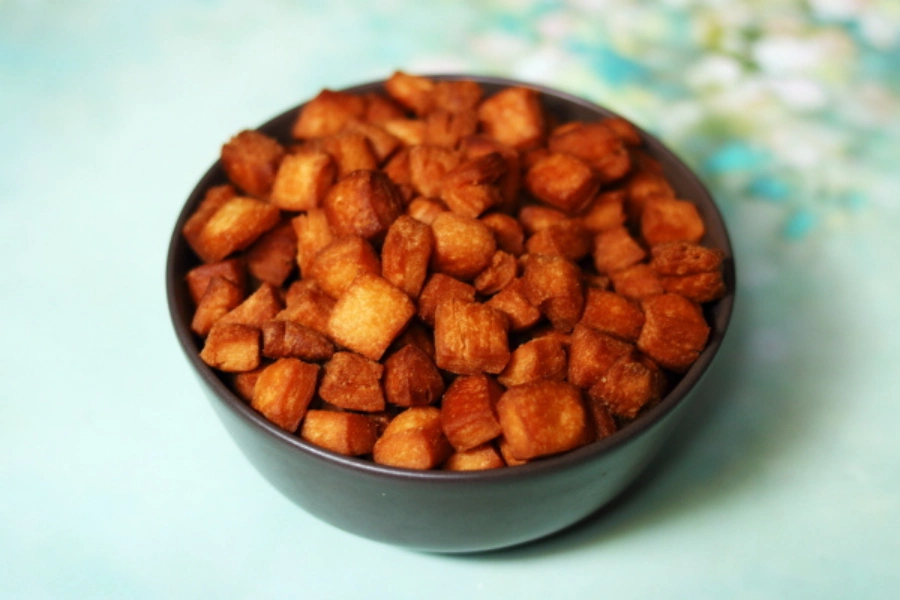
How to Make Shankarpali | Shakkar Para | Maida Biscuit | Diamond Biscuit
- Getting Started
- Grind 3/4 Cup sugar till it is a fine powder. This helps the sugar to dissolve easily.

- Sieve the maida and set aside.
- Grind 3/4 Cup sugar till it is a fine powder. This helps the sugar to dissolve easily.
- Making the Dough for Shakkar Para | Shankarpali
- To a heavy bottomed vessel, add the powdered sugar, 1/2 cup ghee, 1/4 cup milk, and 1/4 cup water.
- Mix well.
- Now, over low flame, heat this mix so that the ghee melts and the sugar dissolves. Do not boil the mix or then use high heat. There is a danger of the milk curdling. If the milk curdles, simple strain the mix, discard the curdled milk, let the mix cool and add 2-3 tbsp milk.
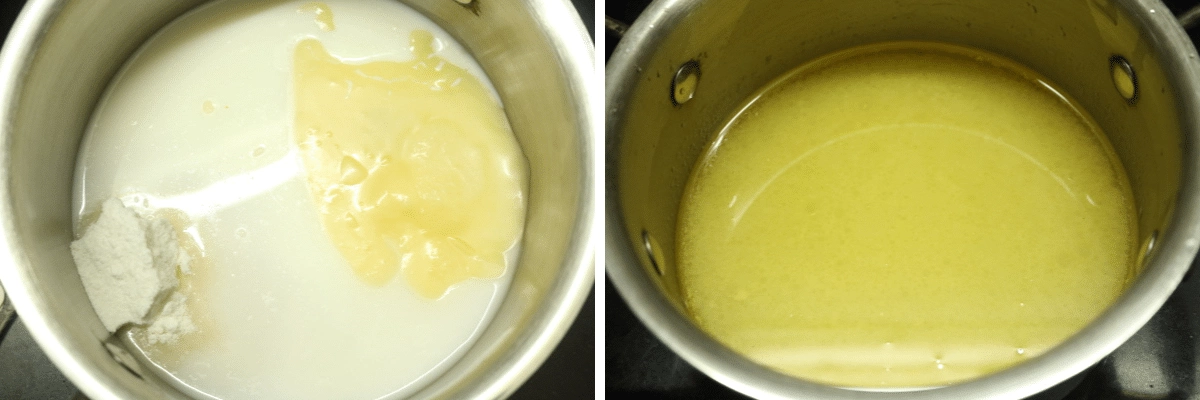
- After the sugar has dissolved, take the milk-water-ghee-sugar mix off the heat and set aside for 10 minutes or till it is lukewarm.
- To this cooled mix, add 1 tbsp besan and 1/4 tsp salt, and mix well.
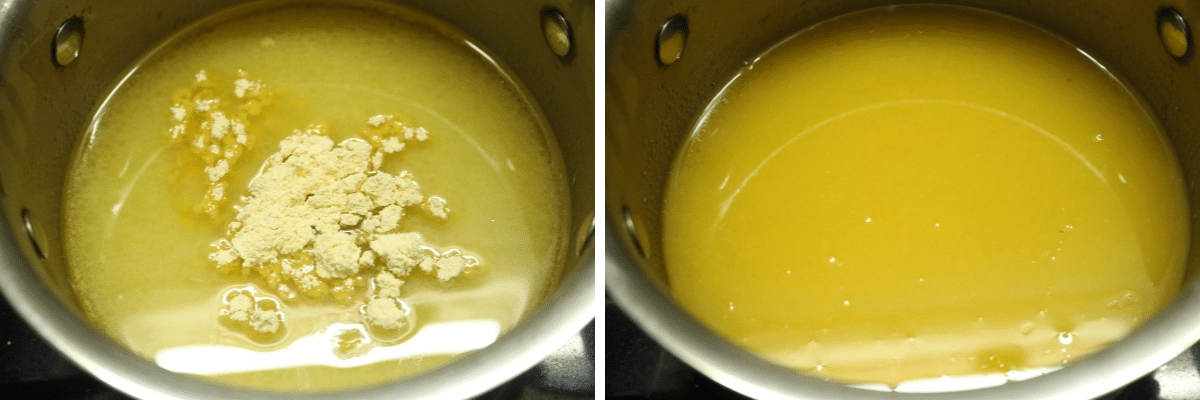
- Next, slowly and gradually add the maida and mix well till you get a soft and pliable dough that does not stick to the vessel and comes together as a ball. You may need a little less of more maida than I have mentioned. If your dough is stiff, add some warm milk about 1/2 tsp at a time.
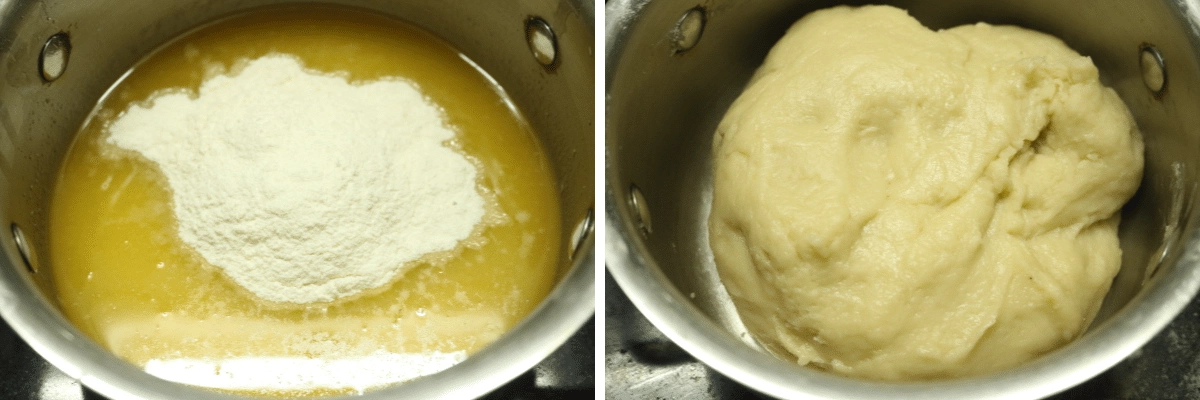
- Making the Shankarpali
- Take a orange-sized portion of the dough and roll into a ball. That is about a 3″ size ball.
- Using a rolling pin, roll the dough into a 7″ circle. Because of the ghee in the dough, it does not stick to the rolling board. As a result, you do not need to dust the surface of the rolling board with any maida. If your dough is sticking to the rolling board, it just means the dough needs a little more maida.

- Fold the rolled dough circle in half to form a half-moon shape.
- Now fold in half from the other end so you have a triangle.
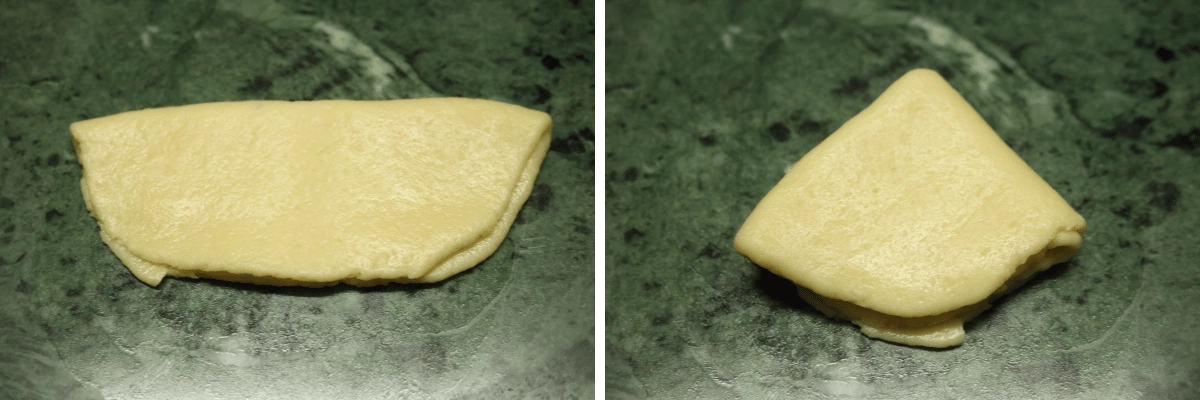
- Once again, roll this triangle into a large triangle about 1/8″ thick (like a paratha). This gives your Shankarpali nice layers.
- Using a sharp knife, cut the flattened dough into 1″ squares or diamond shapes.

- Transfer the cut bits to a plate and repeat the process to shape the rest of the Shankarpali.
- Frying the Shankarpali
- In a heavy-bottomed kadhai or wok, over low-medium flame, heat 2 cups of oil. The oil should be at least 3″ deep. Do not use a high flame to heat the oil.
- To test the temperature of the oil, add one small piece of dough and check if the oil starts to sizzle gently. If the dough sinks to the bottom and the oil does not sizzle, increase the flame and wait for the oil to heat further. If the dough immediately rises to the top and the oil sizzles furiously, lower the heat and let the oil cool a bit. Repeat the test.
- Add some cut dough pieces to the oil and let them fry over medium heat. Flip the pieces over occasionally. You can add quite a few Shankarpali to the oil at a time; they do not stick to each other.
- Let the Shankarpali fry till they are light golden brown. You will find that the Shankarpali also swell a bit.
- Turn down the heat to low. Do this because you will not be able to remove all pieces of Shankarpali from the oil in one go. The low heat prevents the Shankarpali from frying quickly.
- Use a skimmer or a slotted ladle to take the fried pieces out.
- Hold the ladle over the kadhai for a few seconds to let any extra oil drain out.

- Transfer the fried Shakkar Para to a plate.
- Turn the heat back up to low-medium and fry other pieces. Repeat till all pieces are fried.
- Storing Instructions
- Let the Shankarpali cool to room temperature before transferring them to an air-tight container.
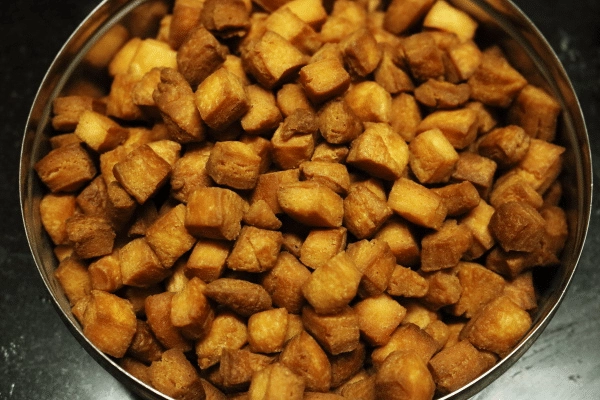
- Let the Shankarpali cool to room temperature before transferring them to an air-tight container.
- Enjoy Shakkar Para with tea or coffee.
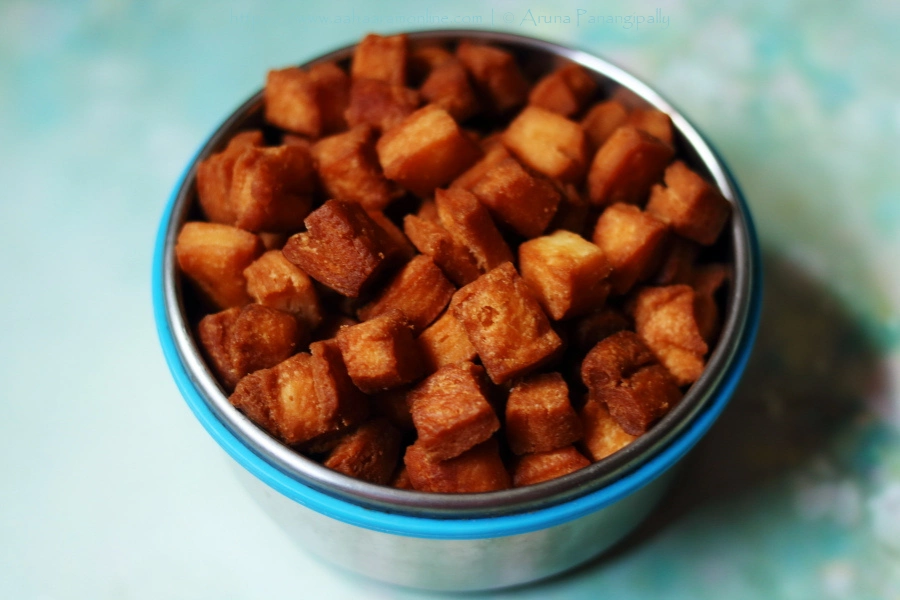
Recipe for The Perfect Shankarpali | Shakkar Para | Maida Biscuit | Sweet Diamond Biscuit
The Perfect Shankarpali | Shakkar Para | Maida Biscuit | Sweet Diamond Biscuit
Equipment
- Wok (1.5 to 2 litre capacity)
- Heavy-bottomed Vessel (2 litre Capacity)
- Rolling Board
- Rolling Pin
- Slotted Ladle/Skimmer
Ingredients
- 3.25 Cups Maida (APF) (~375 gms)
- 1 tbsp Besan, Chickpea Flour (~8 gms)
- 1/2 Cup Ghee (~125 gms)
- 3/4 Cup Sugar (~150 gms)
- 1/4 Cup Milk
- 1/4 Cup Water
- 1/4 tsp Salt
- 3 Cups Oil (I used Peanut Oil)
Instructions
- Powder 3/4 Cup sugar.
- To a heavy bottomed vessel, add the powdered sugar, 1/2 cup ghee, 1/4 cup milk, and 1/4 cup water.
- Mix well.
- Over low flame, heat this mix so that the ghee melts and the sugar dissolves. Do not boil the mix or then use high heat. There is a danger of the milk curdling. If the milk curdles, simple strain the mix, discard the curdled milk, let the mix cool and add 2-3 tbsp of milk.
- Take off the heat and set aside for 10 minutes.
- Add 1 tbsp besan and 1/4 tsp salt, and mix well.
- Gradually add the maida and mix well till you get a very soft dough that does not stick. You may need a little less of more maida than I have mentioned.
- Take a orange sized portion of the dough and roll into a ball.
- Using a rolling pin, roll the dough into a 7" circle.
- Fold the rolled dough in half to form a half-moon shape.
- Now fold in half from the other end so you have a triangle.
- Roll this triangle into a large triangle about 1/8" thick (like a paratha).
- Using a sharp knife, cut the flattened dough into 1" squares or diamond shapes.
- Transfer the cut bits to a plate and repeat the process to shape the rest of the Shankarpali.
- In a heavy-bottomed kadhai or wok, over low-medium flame, heat 3 cups of oil. The oil should be at least 3" deep. Do not use a high flame to heat the oil.
- To test the temperature of the oil, add one small piece of dough and check if the oil starts to sizzle gently. If the dough sinks to the bottom and the oil does not sizzle, increase the flame and wait for the oil to heat further. If the dough immediately rises to the top and the oil sizzles furiously, lower the heat and let the oil cool a bit. Repeat the test.
- Add some cut dough pieces to the oil and let them fry over medium heat. Flip the pieces over occasionally. You can add quite a few Shankarpali to the oil at a time.
- Let the Shankarpali fry till they are light golden brown. You will find that the Shankarpali also swell a bit.
- Turn down the heat to low. Do this because you will not be able to remove all pieces of Shankarpali from the oil in one go. The low heat prevents the Shankarpali from frying quickly.
- Use a skimmer or a slotted ladle to take the fried pieces out. Hold the ladle over the kadhai for a few seconds to let any extra oil drain out.
- Transfer the fried Shakkar Para to a plate.
- Turn the heat back up to low-medium and fry other pieces. Repeat till all pieces are fried.
- Let them cool to room temperature before transferring them to an air-tight container.
- Enjoy with tea or coffee.
Notes
- The dough make feel stiff as time goes by. This happens because of the ghee in the dough. Just knead a portion of it well just before rolling it and the portion will become soft again because the ghee in it will melt because of the warmth of your hand.
- Do not use high heat while frying the Shankarpali. If you do the Shankarpali will char quickly because of the sugar in them.
- Use a large enough kadhai to fry the Shankarpali because the heat distribution needs to be even. Using a small kadhai and lesser amount of il will not give you the same results.
- The Shankarpali will be crisp but may feel a little soft when you remove them from the oil. Don’t worry about that because they crisp up as they cool down.

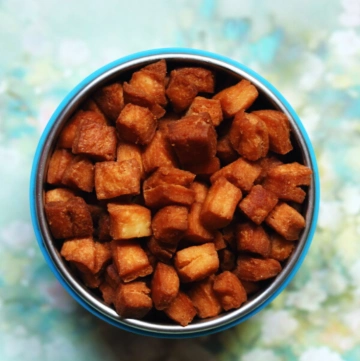

Leave a Reply